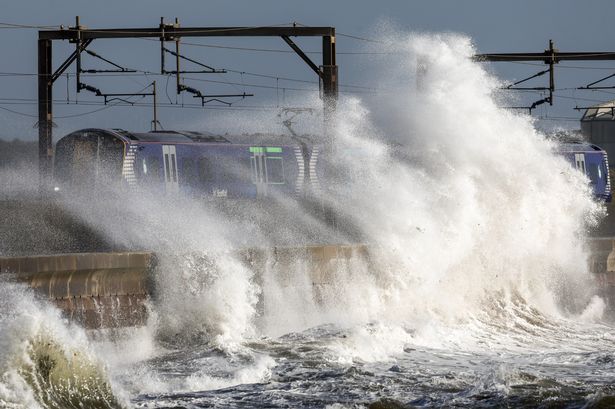Storm Éowyn, a powerful weather system that swept across the British Isles and Ireland, tragically claimed its first victim on Friday. The storm’s intensity prompted the Met Office, the United Kingdom’s national weather service, to issue red “danger to life” warnings, the highest level of alert, signifying a significant threat to public safety. These warnings highlighted the potential for widespread disruption and damage due to exceptionally strong winds, heavy rainfall, and the possibility of coastal flooding. The ferocious gales reached record-breaking speeds, with a peak gust of 114 mph registered in Ireland, underscoring the storm’s exceptional power and the very real danger it posed. While the precise details surrounding the fatality remain limited, this tragic loss underscores the seriousness of heeding weather warnings and taking appropriate precautions during severe weather events.
The exceptional wind speeds recorded during Storm Éowyn placed it amongst the most powerful storms to impact the region in recent years. The 114 mph gust measured in Ireland not only broke existing records but also signified the potential for widespread structural damage, including to homes, businesses, and critical infrastructure. Such high wind speeds can uproot trees, down power lines, and create hazardous flying debris, posing significant risks to life and property. The severity of the storm prompted authorities to issue urgent advisories, urging residents to stay indoors, avoid unnecessary travel, and secure any loose objects that could become airborne in the strong winds. The storm’s rapid intensification likely contributed to the challenges faced by emergency services and the public in adequately preparing for its impact.
The Met Office’s red “danger to life” warnings, the most severe category in their warning system, served as a stark indication of the potential consequences of Storm Éowyn. These warnings are reserved for situations where there is a high probability of widespread and significant impacts, including potential loss of life. The criteria for issuing a red warning include the anticipation of extremely strong winds, heavy rainfall leading to severe flooding, or a combination of both. The issuance of such a warning emphasizes the need for the public to take immediate action to protect themselves and their property. The specific areas covered by the red warnings likely experienced the most extreme conditions, highlighting the localized nature of severe weather impacts even within a larger storm system.
Storm Éowyn’s impact extended beyond the tragic loss of life, causing widespread disruption across the affected regions. The powerful winds brought down trees and power lines, leaving many homes and businesses without electricity and disrupting essential services. Travel was severely impacted, with road closures, flight cancellations, and disruptions to train services reported across the area. Coastal communities faced the additional threat of flooding due to storm surges and high waves, further complicating the emergency response. The cumulative effect of these disruptions highlighted the vulnerability of modern infrastructure to extreme weather events and the importance of robust emergency preparedness plans.
The aftermath of Storm Éowyn will likely involve extensive recovery efforts, including restoring power, clearing debris, and repairing damaged infrastructure. The economic impact of the storm, including property damage, business interruption, and the cost of emergency response, is expected to be substantial. The storm also serves as a stark reminder of the increasing frequency and intensity of extreme weather events, potentially linked to climate change. This underscores the need for ongoing investment in climate resilience measures, including strengthening infrastructure, improving early warning systems, and promoting public awareness of severe weather risks.
The tragic loss of life during Storm Éowyn serves as a somber reminder of the power of nature and the importance of respecting weather warnings. While meteorological advancements have improved our ability to forecast and predict severe weather, the inherent unpredictability of such events necessitates a heightened sense of vigilance and preparedness. The storm’s impact underscores the need for individuals, communities, and governments to prioritize safety and implement effective strategies to mitigate the risks associated with extreme weather. As climate change continues to influence weather patterns, the likelihood of encountering more frequent and intense storms increases, making proactive planning and preparedness crucial for minimizing future losses and protecting lives and property.














